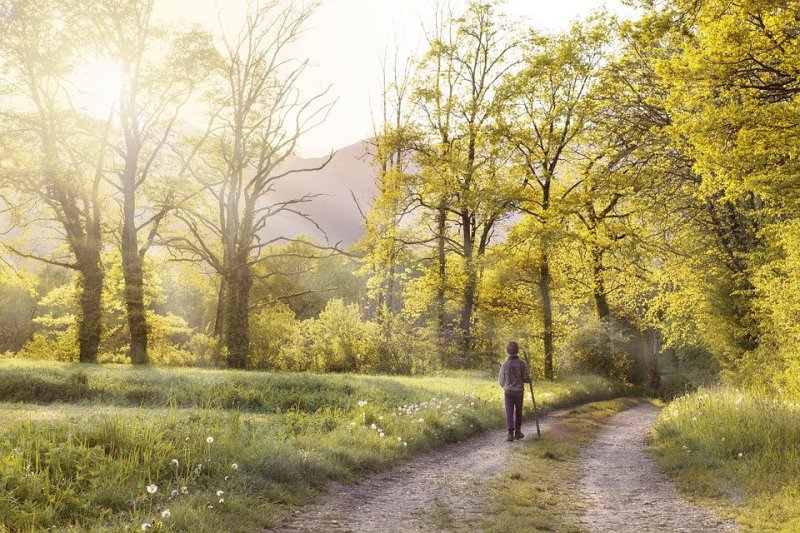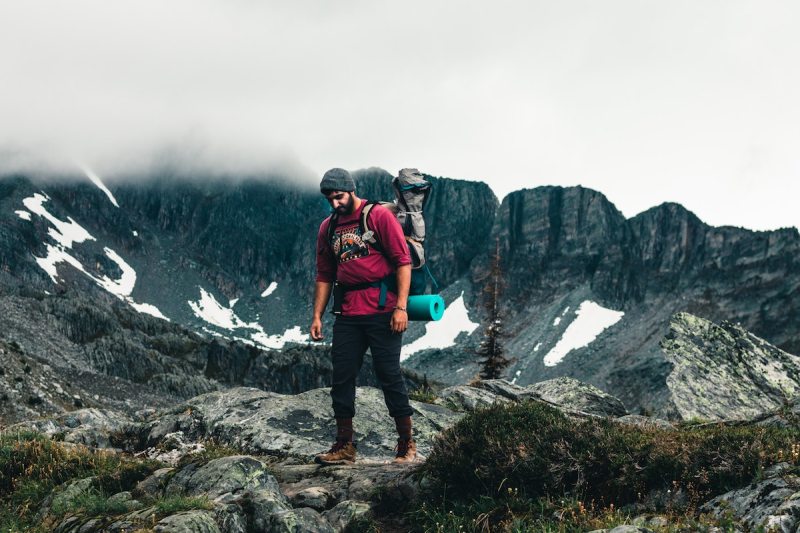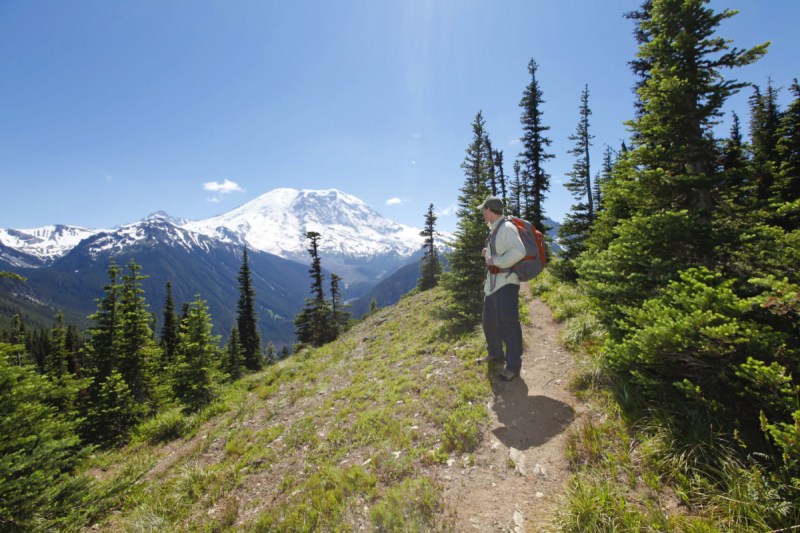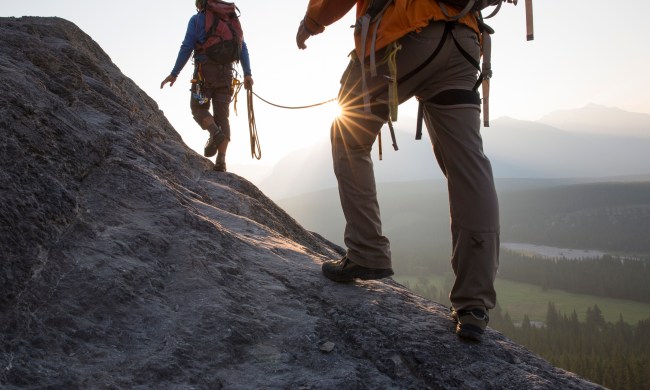I don’t know about you, but I love the fact that spring is here, and I can hit the trail again. I went out the other day without having to load up in all of my outdoor layers and enjoyed a trail run along some snow-free tracks. It’s that time of year when you can dust off your hiking boots, dig out your trekking poles, and start to make some hiking plans. But spring isn’t all sunshine and dry tracks. A little like fall
Spring is changeable. That’s what I’m getting at. It’s perhaps the toughest time of the year to pack a hiking pack because, on any given day, you might need to change layers four times. The days are long enough to get a good hike done, but you can still find yourself caught out after dark if you’re not careful, and once that sun drops, the temperature goes with it. In return, though, spring rewards us with those golden hours at sunrise and sunset — the outdoor photographer’s dream — raging waterfalls as the snow melts off, and the sounds and sights of nature coming back to life after a winter’s hibernation. It’s great if you get it right, and if you follow our spring
Dress and pack accordingly

Spring weather loves to change at a moment’s notice, even going so far as to deviate from the forecast weather completely. On a spring hike, you should always be carrying either a waterproof backpack or, alternatively, pack into dry bags for modular and waterproof packing — this is my preferred method for dry gear that you can find on the go. You should always be either wearing or carrying the following items on your spring hikes:
- Waterproof jacket
- Insulated jacket
- Windbreaker
- Waterproof hiking boots
- Waterproof rain pants
- Wool socks
- Extra layers of pants, shirts, sweaters, and socks – merino wool ideally, or nylon or polyester instead. Never wear or carry cotton layers, as these hold sweat and water and can cool down instantly, putting you at increased risk of hypothermia.
- Windproof or waterproof gloves
- A cap and/or a warm hat
- Extra water bottle and snacks
- Headlamp
- Bug spray
- Trekking poles
- Tall leg gaiters if you’re heading into deep mud or leech or tick territory.
- Sunscreen — that UV can get you, even on overcast days.
Remember, when it comes to packing for a spring hike, it’s always better to overcompensate than to feel miserable in chilly weather due to improper clothes and underpacking essential gear.
Check weather forecasts and trail conditions

Springtime can be very unpredictable, but that doesn’t mean we shouldn’t plan at all. Stay up-to-date with weather conditions on the day of your hike, and remember to check trailhead websites, too, as closures or new daytime hours can change at a moment’s notice. If the specific trailhead doesn’t have a website, try to find it via your county’s website or track down a telephone number to call. Worst case scenario, just skip hiking for the day if Mother Nature is particularly emotional.
During a hike, be sure to keep track of the weather through various apps, like The Weather Channel or WeatherBug. And if you end up getting caught in a storm or a period of heavy rainfall during a hike, it’s best to head back and call it quits for the day. Never risk your health and safety by climbing to the peak of a summit — trust me, it’s not worth it for the ‘gram!
Watch for trail hazards during your hike

Exploring new and familiar trails may be scenic, but each one of them also comes with its fair share of hazards during the spring season. Here’s what to watch out for to make your hike as safe and enjoyable as possible:
- Rattlesnakes: Snakes love to say hello to hikers during the early spring mornings. Be sure to keep your eyes peeled for snakes at all times, as they could be lurking within holes on a trail. They also love to poke their heads out of nearby bushes and grass, which makes it too easy for hikers to step on one. If you do end up getting bit by a snake, whether it’s venomous or not, be sure to quickly identify its color, shape, and size, and seek medical attention right away.
- Hypothermia: Stay hydrated, stay warm, and consume extra calories during a springtime hike to avoid the onset of hypothermia. Symptoms include slurred speech, memory loss, shivering, and exhaustion, among others. If you or a fellow hiker shows such symptoms, it’s important to replace wet clothes with dry layers, do some small, quick bursts of exercise, and hydrate ASAP. And of course, seek medical attention as soon as you can.
- Slippery patches: Proceed with caution and take your time. It’s best to take slow and careful steps rather than rush up or down a trail. Awareness is also key here, as it’s important to keep your eyes open for slippery surfaces so you can mentally prepare yourself for the next steps you’re about to take. (Pro tip: Wear those hiking boots!)
- Streams and creek banks: Take slow and steady steps through waters, particularly in a “shuffling” motion. It’s also important to unhook any backpack straps, as it will only weigh you down if you end up falling. And of course, if the waters are higher than your knees, it’s better to be safe than sorry and avoid crossing.
- Pesky insects: This is where that bug spray comes in handy! Be sure to spray this on clothing like shirts, pants, and socks, but read the instructions first, as some bug sprays are not suitable for fabrics like rayon and spandex. In addition, tuck your pants into your socks and opt for light-colored clothing so you can spot any pesky bugs on you. For ticks, avoid tall grass, use a DEET-based bug spray, and check yourself for ticks as often as you can, especially after you arrive home from your hike.
More spring hiking tips

- Bring traction devices. If you’re planning on hiking at higher elevations, you may need to bring traction devices such as microspikes or crampons. These will help you to grip any snow and ice that hasn’t yet melted.
- Leave no trace. Spring is a delicate time for the environment. Be sure to leave no trace by packing out all of your trash and following “Leave No Trace” principles.
- Start with shorter hikes. If you didn’t do much hiking in the winter and haven’t been out on the trails since last spring or summer, it’s a good idea to start with shorter hikes to get your legs back into shape.
- Let someone know where you’re going. Before you head out on your hike, let someone know where you’re going and when you expect to be back.
No matter what the season brings, be sure to enjoy your hike and have fun! It is, after all, an activity that promotes exploration and adventure. Just be sure to pack accordingly and keep your eyes peeled for hazards on the trail, as well as within the sky. A greater sense of awareness will create not only a safe environment for hiking but throughout life as well.




